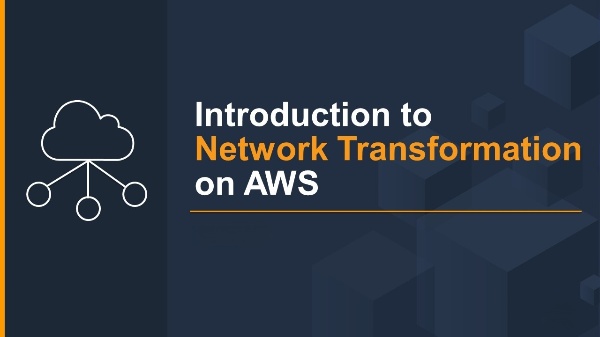| Posted on | science-technology
What is Network Transformation on AWS?
| Posted on

Network Transformation on AWS refers to the full redesign and reconstruction of an existing organization's network infrastructure so it can benefit fully from what Amazon Web Services (AWS) is providing. Such a huge change entails thinking through and recreating each part of the whole network infrastructure, including critical pieces of it, like its use of cloud resources, Wide Area Network (WAN), branch offices, data centers, remote user connection methods, and network security measures overall.
Key Components of Network Transformation on AWS
-
Hybrid Connectivity Architecture: Organizations extend their existing network to AWS using hybrid connectivity solutions. This involves connecting data centers, branches, and users directly to applications on AWS.
-
AWS Global Infrastructure: AWS offers a strong global network backbone that enables firms to connect resources across the world with low latency, availability, and security.
-
Use Cases: AWS has further expanded on several different use cases that detail the idea of a network transformation and they encompass the following:
-
Connectivity within AWS: Interconnecting Virtual Private Clouds (VPCs) within the same AWS region or across regions using AWS Transit Gateway.
-
Data Center Connectivity: To establish strong connectivity between data centers across the on-premises environment and AWS, there are means such as AWS Direct Connect or AWS Site-to-Site VPN.
-
Branch connectivity: The process of implementing SD-WAN solutions developed specifically for connecting and optimizing remote branch offices.
-
Connectivity to the Internet: Using internet-based connectivity solutions with optional acceleration through AWS global backbone.
-
Network Security: Enhancing network security by leveraging AWS's integrated security services.
-
-
Scalability and Flexibility: AWS's network transformation allows organizations to scale their network infrastructure up or down quickly, providing increased flexibility and agility to adapt to changing business requirements.
-
Cost Efficiency: By reducing reliance on high-cost, under-utilized MPLS links and eliminating long-term contracts, organizations can benefit from AWS's pay-as-you-go pricing model.
Benefits of Network Transformation on AWS
-
Improved Performance: Leveraging the global infrastructure of AWS guarantees low latency and high availability of applications.
-
Improved Security: Integrated services security offers robust, converged security for all traffic.
-
Cost Savings: Organizations can go a long way in saving their total cost by diminishing dependence on expensive MPLS links and embracing a more flexible pay-as-you-go model.
-
Scalability: Scalability is easy with enterprise architecture when the network infrastructure can become more scalable based on what business needs of an organization may change.
-
Flexibility: Flexibility is defined as the ability to choose a combination of connectivity options and different network topologies. It supports changing the network infrastructure tailored and specific to a group.
In summary, Network Transformation on AWS comprises a holistic approach toward revamping the very entire network infrastructure of the enterprise concerned. It is geared, quite more so, toward making certain an organization will be in a position fully to seize all benefits that come by way of AWS's advantage regarding all capabilities provided by cloud use. From this strategic operation come full-scale improvements in performance with strengthened security levels, and sizeable cost-cutting savings with room to scale up and scale back operational modes easily.
0
0 Comment
Network Transformation on AWS involves modernizing traditional network infrastructure using AWS services for improved scalability, security, and efficiency. It includes tools like Amazon VPC, AWS Direct Connect, and AWS Transit Gateway for connectivity, AWS Shield for security, and CloudFront for optimized content delivery. AWS enables flexible, cost-effective, and secure network operations, aligning with cloud-first strategies.
0
0 Comment
